Rishi Sunak’s reshuffle should be the last big one before the election
A period of stability in the government ranks is needed.
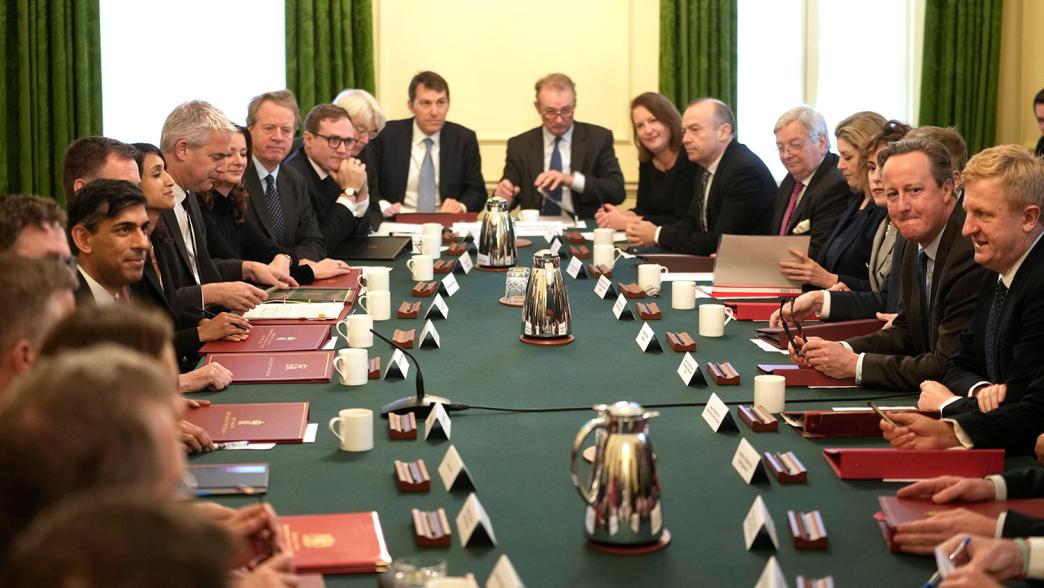
Big changes at the top of government made headlines, but Rishi Sunak's reshuffle also saw quite a lot of turnover at lower ranks. Now he has built his team, the prime minister should prioritise stability in the run-up to next year’s election, say Finn Baker, Tim Durrant and Sachin Savur
Rishi Sunak resisted making too many changes to his top team in his November reshuffle, leaving in place all but four of his secretaries of state. While an extensive reshuffle can seem appealing, particularly for a government so far behind in the polls seeking a “reset”, it is almost never worth the disruption it entails.
Besides sacking Suella Braverman as home secretary, Sunak used the reshuffle to address a number of long-running and high profile challenges. Steve Barclay was moved on from the Department of Health and Social Care after failing to resolve strikes in the NHS, taking on the environment brief after Thérèse Coffey was sacked following criticism over her lack of progress on sewage leaks.
The decision to bring former prime minister David Cameron back into government helped to limit the extent of the reshuffle and doubled the number of Lords in cabinet in the process. Cameron’s appointment has renewed interest in the upper house and has proved controversial with some MPs – the Commons will still want to scrutinise the work of the foreign secretary.
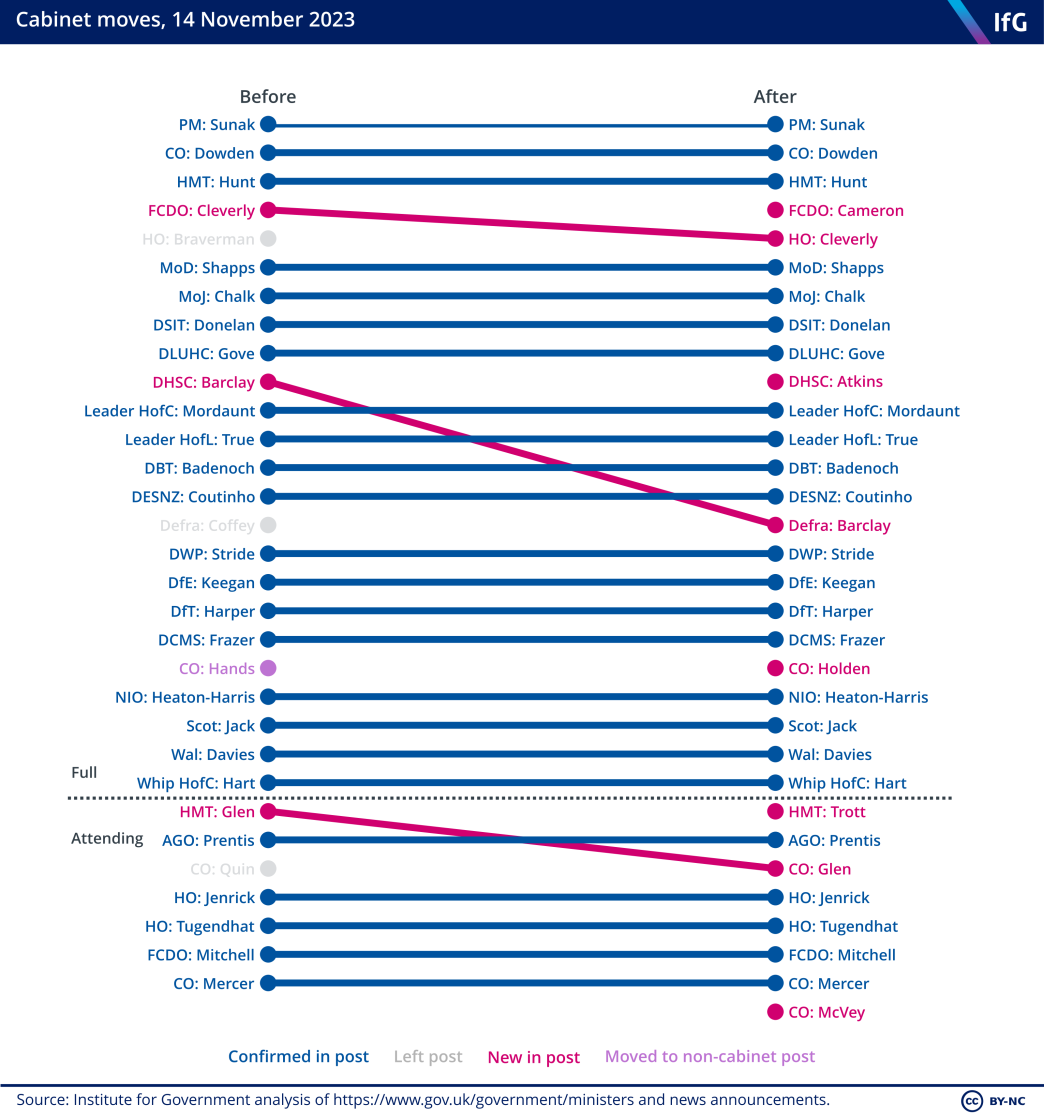
There are some very experienced – and very new – cabinet members
David Cameron becomes the first former prime minister to return to a ministerial role in more than half a century. Along with the appointment of veteran minister Esther McVey, he brings a great deal of experience to the cabinet table.
This is in contrast to the relative inexperience of other senior ministers: more than two thirds of the new cabinet were first appointed to government after the EU referendum, while a quarter have only served since the last general election. This inexperience was heightened by the departure from cabinet of long-serving minsters, like Greg Hands and Thérèse Coffey, and the appointment of relatively new MPs, like Trott and Holden.
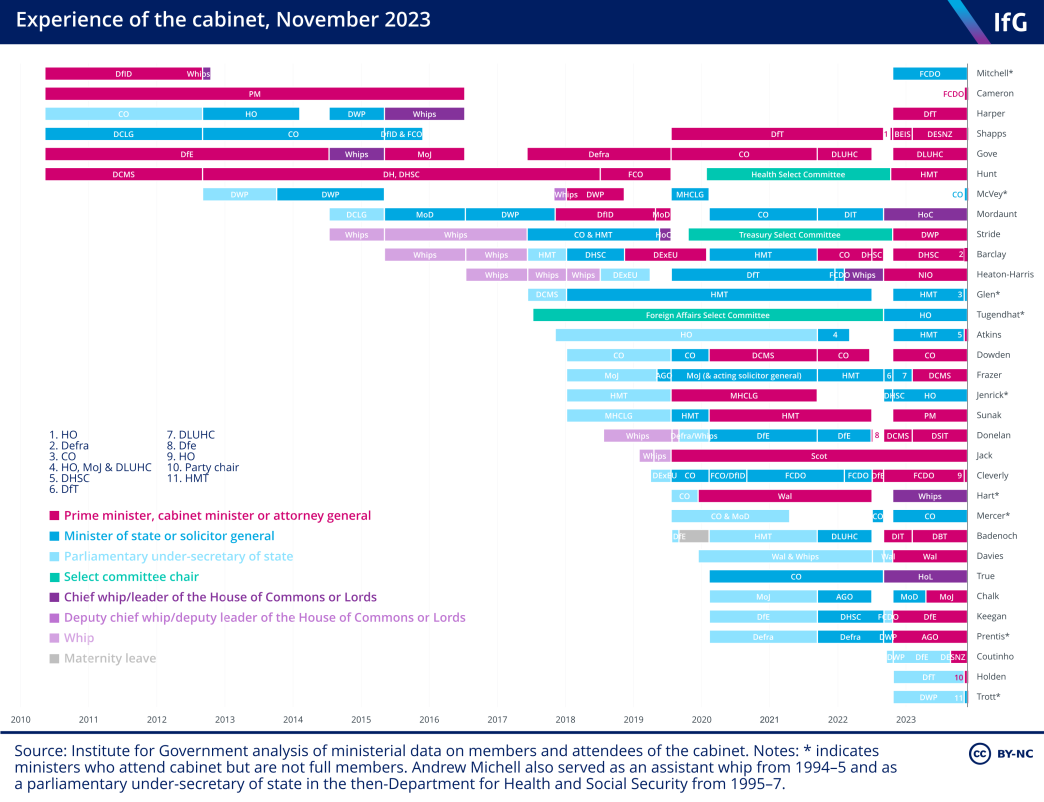
In addition, too little progress was made at the reshuffle towards increasing the diversity of experience within the cabinet – an issue that the Institute for Government has previously flagged in relation to Sunak’s government. While the proportion of female cabinet ministers increased marginally – from 29% to 31% – for the first time in over a decade, all four great offices of state are occupied by men. And all four of these men were privately educated.
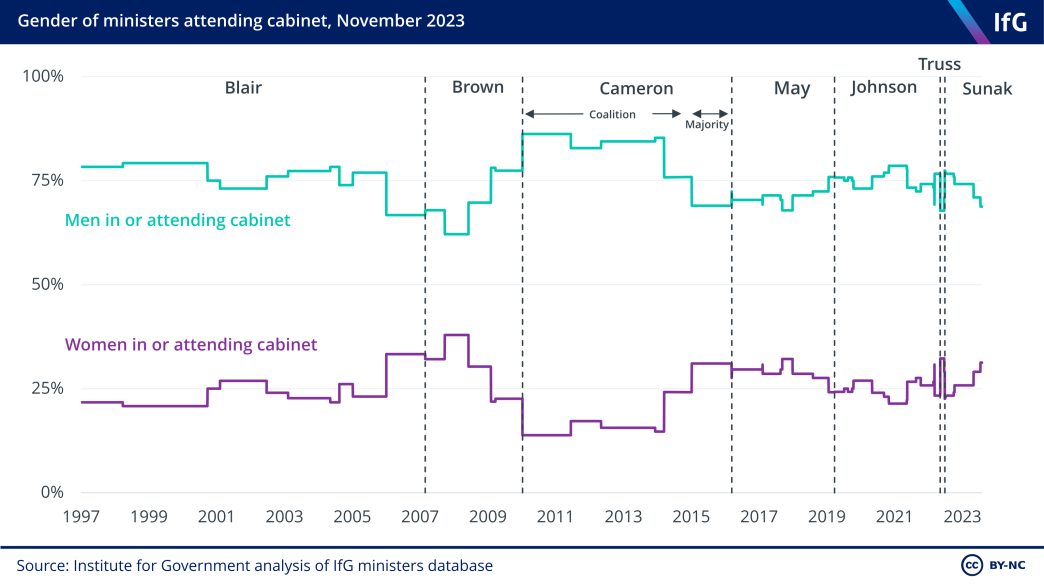
Sunak has promoted some new faces to government
While much of the focus was on the return of David Cameron, Sunak also added some fresher faces to his frontbench. Nine new ministers were appointed from the 2019 intake, meaning that a quarter of the government frontbench in the Commons is drawn from that cohort, up from 16% at the beginning of his premiership.
This promotion of rising talent was at least partly facilitated by increasing the number of the most junior ministers, with a net total of three new parliamentary under secretary of state roles created in the reshuffle.
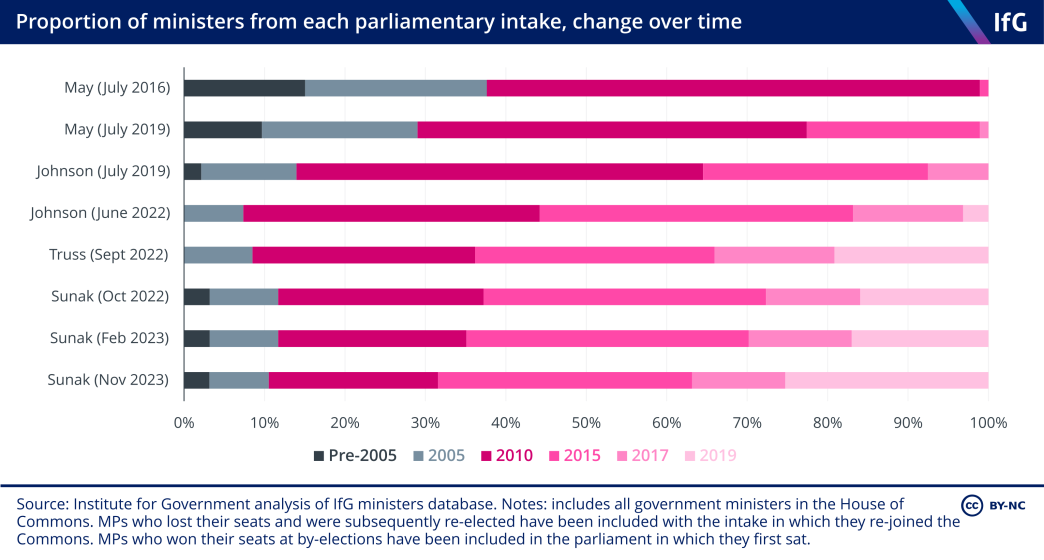
While there was a small rise in the proportions of women at cabinet and minister of state level, the proportion of women across the entire government actually fell, declining from 31% to 29%. Notably, every female minister was removed from the Ministry of Defence and the Department for Transport.
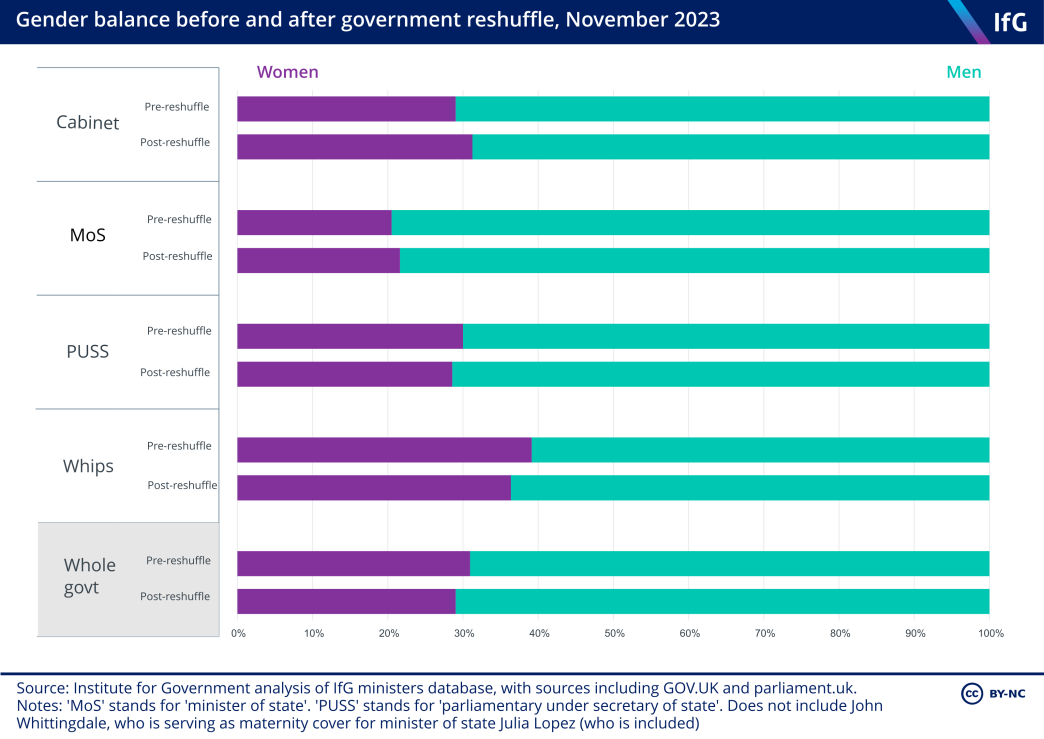
Promotion of new talent inevitably involves the loss of existing ministers. While significant churn was avoided at cabinet level, the junior ranks saw a significant number of ministers moving portfolios or leaving government altogether. This is bad news for government, contributing to a loss of critical knowledge and momentum across government. Churn was particularly high in certain departments, with four out of the six Treasury ministers newly appointed at this reshuffle.
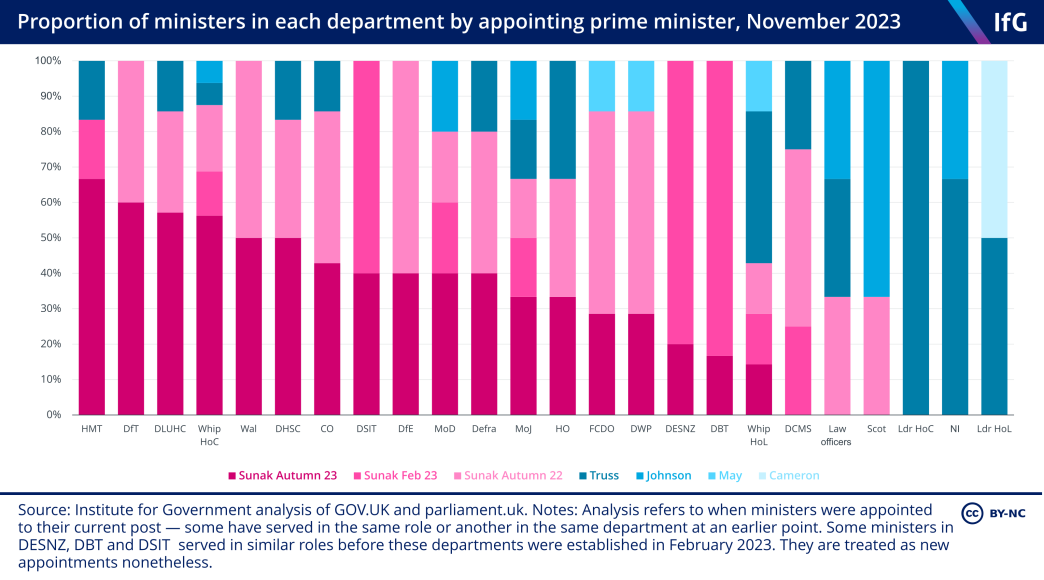
A number of ministers also chose to return to the backbenches, seemingly of their own accord
Nick Gibb, who had spent almost a decade as schools minister since 2010, announced he was leaving the government and will step down from parliament at the next general election. George Freeman, who had served the equivalent of four years as a science minister since 2014, also left. Two health ministers, Neil O’Brien and Will Quince, chose to leave the department, both stressing that they wished to spend greater time in their constituencies. 7 //twitter.com/NeilDotObrien/status/1723986675381014637; Will Quince, tweet, https://twitter.com/willquince/status/1724013911832187200 Other ministers, like Jeremy Quin, who was an attendee at cabinet, chose to decline the prime minister’s offer of a new job. 8 //twitter.com/JeremyMQuin/status/1724049900050973098
Perhaps the most emblematic move at the reshuffle was the sacking of Rachel Maclean as housing minister, with Lee Rowley returning to the role in her place. Maclean was the fifteenth housing minister since 2010 and the sixth since the last general election. The government cannot expect to get a grip of serious policy challenges when ministerial tenure is measured in months.
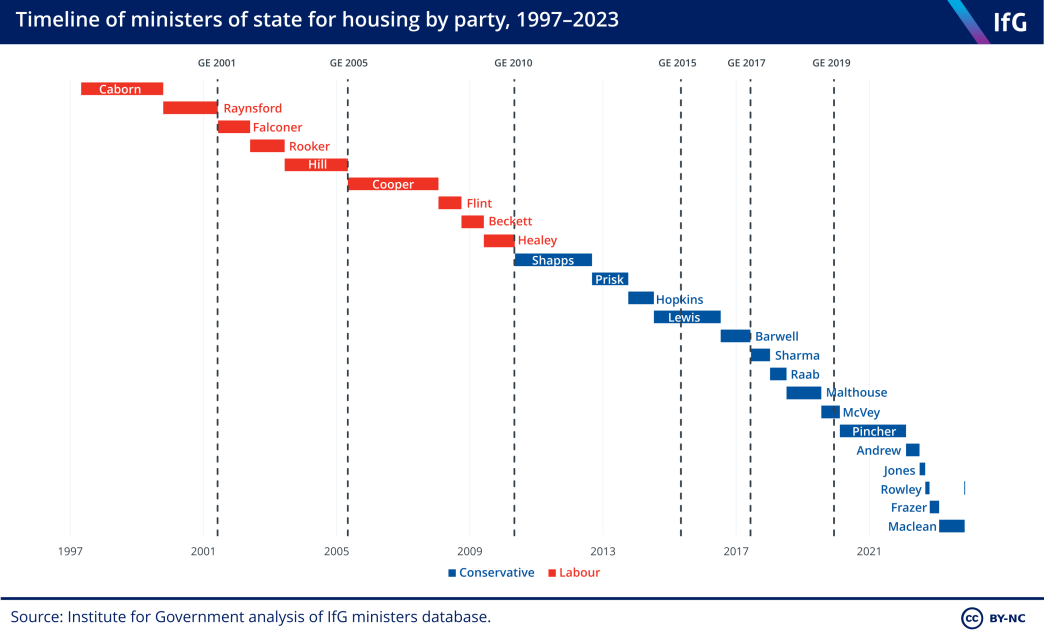
The government and opposition have both reshuffled recently – are these the election teams?
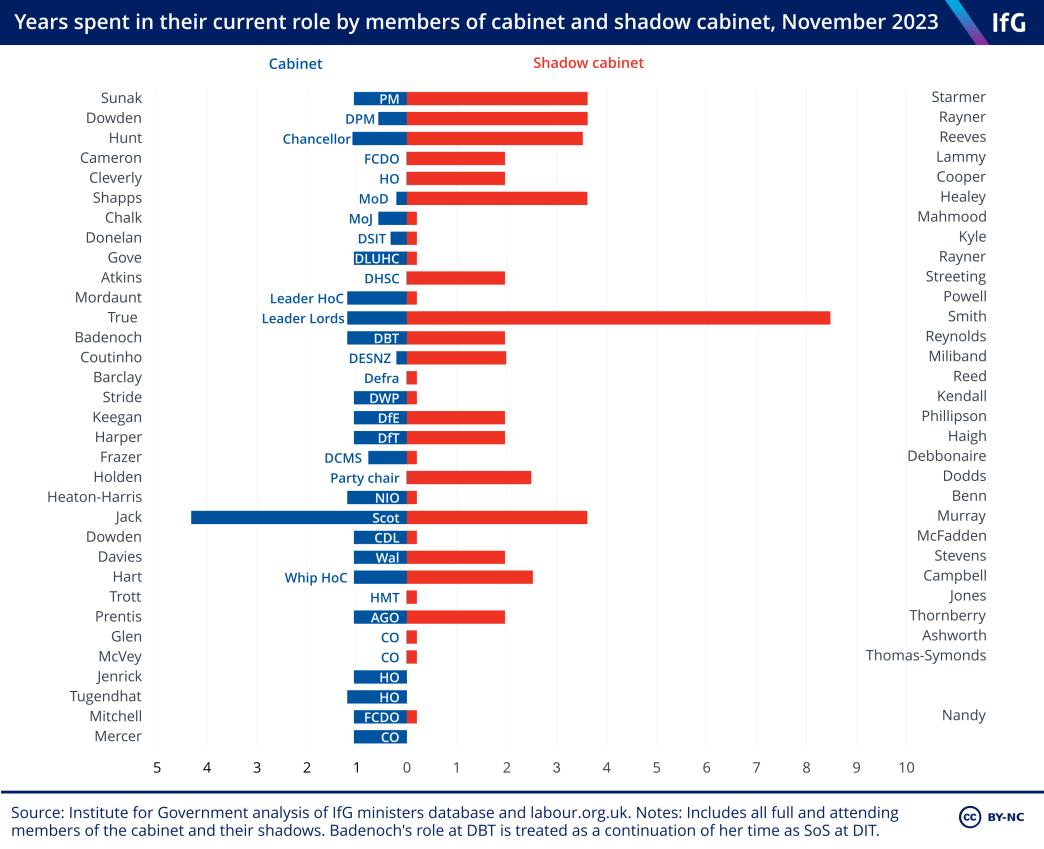
The prime minister has set out five measures on which to be judged by at the election, and a number of his new appointments will inherit responsibility for hitting Sunak's pledges. New health secretary Victoria Atkins, and her two new health ministers, must quickly get to grips with the NHS if the government hopes to cut waiting lists, while new home secretary James Cleverly needs to find a way to fulfil Sunak’s promise to ‘stop the boats’.
Two of Keir Starmer’s five missions involve cutting crime and ‘getting the NHS back on its feet’, and his shadow cabinet will benefit from having served longer in post than their ministerial counterparts – twice as long on average.
Sunak may believe that a change of faces is essential ahead of a difficult general election campaign, but too much change risks undermining delivery against the very pledges on which he hopes to campaign. Reshuffles alone cannot fix systemic challenges in policy and delivery.
- Topic
- Ministers Policy making
- Political party
- Conservative
- Administration
- Sunak government
- Department
- Foreign, Commonwealth and Development Office Department of Health and Social Care Home Office
- Public figures
- Rishi Sunak James Cleverly David Cameron Thérèse Coffey Keir Starmer Steve Barclay Suella Braverman Jeremy Hunt
- Publisher
- Institute for Government